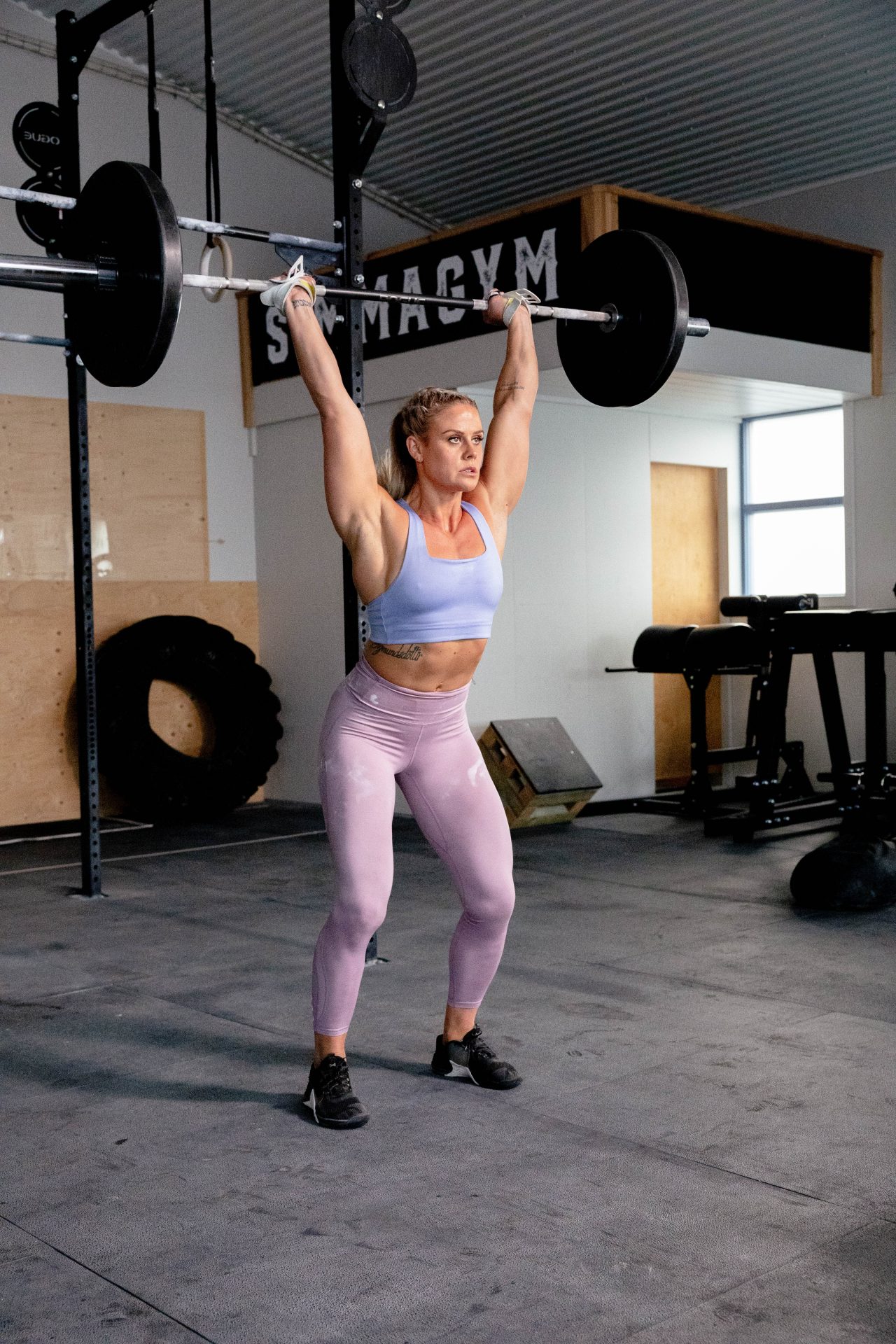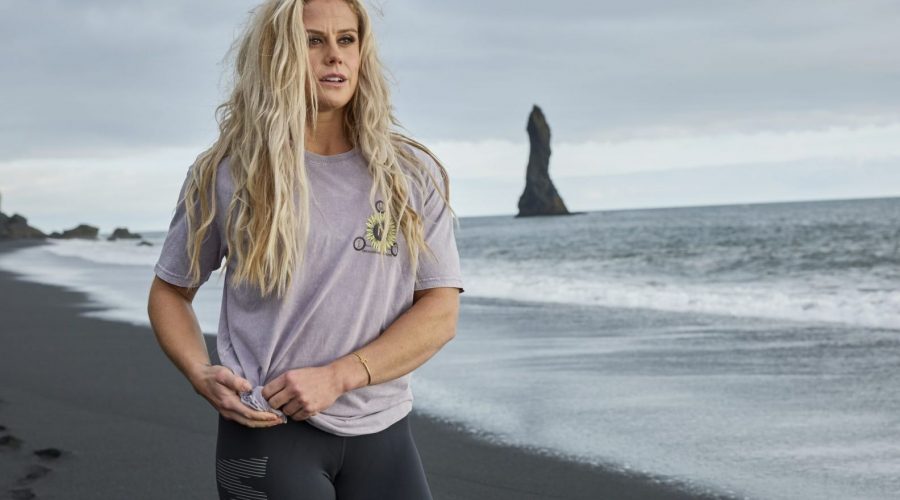We asked an Icelandic CrossFitter what can we learn about women’s strength from Scandinavian culture
Sara Sigmundsdóttir proves Scandinavia’s biggest export isn’t hygge – it’s female strength.
When Sara Sigmundsdóttir went to Europe in 2016, she was shocked by how women reacted to her muscles. As an athlete who has placed third in the Crossfit Games and deadlifts 155kg, Sigmundsdóttir was used to being celebrated for her physical growth.
“But in this gym in Spain, the women were doing CrossFit with very light weights because they didn’t want to get muscles. I was like, ‘Wouldn’t you rather just see what your body is capable of doing?’ But that mindset of smallness was so set in stone,” she says.
You may also like
CrossFit Open 2022: what is the 22.1 workout and why is it all over Instagram?
While she knows that things have changed over the past six or so years with weight lifting sports going mainstream and social media offering a chance for us to see different types of bodies, she also thinks that Iceland has a unique position on women’s strength to the rest of the world. “I come from a place where Vikings come from, and they were probably all big-boned and strong, even the women,” she jokes.
But really, she puts the acceptance of strong women down to general equality in the country. While it’s by no means a perfect place, Iceland was the first country to elect a female president in 1980, has gender-neutral parental leave and has topped the World Economic Forum’s Global Gender Gap Report for 12 years in a row. In short, seeing strong women is just a way of life.

“There are also five or so very famous CrossFit athletes from the country, in a population of 300,000. I think having that many famous women with strong bodies normalises female strength,” says Sigmundsdóttir.
Despite this, getting into fitness wasn’t plain sailing for Sigmundsdóttir. “I started exercising when I was 17 because all of my friends were in relationships so I decided I needed a boyfriend too, and I thought the only way to do that was to look good,” she says. So she started going to spin classes, which she hated, and then signed up to a military bootcamp-style training programme.
“We were doing a circuit involving running laps interspersed with press-ups and squats. I was doing press-ups on my toes and the coach stopped me to say I was really strong. I was so shocked because I didn’t think I had any athletic ability, and that compliment made me want to keep improving so that he’d keep thinking I was good. I started doing more strength-focused stuff, and four years later, I was competing in CrossFit,” explains Sigmundsdóttir.
You may also like
CrossFit home workouts: a strength, gymnastics and cardio workout to do from your living room
That’s how she built the muscles that now turn people’s heads. “When I take my jacket off in the airport to go through security, men look at their friends and say, ‘Oh she could beat you up.’ Is that meant to be a compliment? It’s a weird thing to say and they only joke about it because I’m a woman with muscle. I’d love to normalise that body shape for women across the world,” she says.
And she is. With nearly 2 million followers on Instagram, women are looking up to Sigmundsdóttir as a strong woman they want to be like. “My biggest goal is to help young women’s mental health so they aren’t embarrassed by who they are and they embrace themselves,” she says. And here’s how she recommends starting…
How to embrace your strength:
1. Compliment other women
That one trainer who told Sigmundsdóttir that she was strong inspired her to keep complimenting others. “My rule is now is that I want to compliment everybody as much as I can because that one compliment really changed my whole life. All of a sudden I started seeing myself as strong – a word I’d never associate with myself normally,” she says. “We so often look at our friends and think nice things about them but just assume they know it, but really your opinion on something they’re great at could be a huge surprise to them.”
If you don’t feel like you have anyone to compliment you, ask for one, she says. “I started asking people around me what the one thing they thought was unique about me was. Hearing somebody else’s opinion, even if it was just that I have long natural eyelashes, gave me a new perspective on myself.”
2. Think about skills over aesthetics
“I remember at the beginning of my CrossFit journey, I’d wear jackets out because I knew everybody would stare at my now-muscley arms. But one of my friends turned to me and said, ‘Can those people do 15 muscle-ups?’ I realised she was right and now I really try to think about what my body does rather than what it looks like,” she says. “Why are you hiding all your skills because you don’t fit in that specific box of what a girl should be like?”
3. Let yourself ‘do both’
On that, Sigmundsdóttir says that we need to redefine how we see strength in women. The moment that she realised you could be strong and feminine came when she saw a documentary about wrestler Ronda Rousey.
“You watch her training and she’s sweating hard with no make-up on and being called a ‘beast’. And then you see her later that day wearing a dress and heels and I just loved that she is shown doing both things. I now love seeing girls that are muscular who don’t try to hide away but embrace their bodies in stereotypical feminine clothes,” says Sigmundsdóttir.
You may also like
Activewear minidresses are having a moment, and they’re perfect for summer – these are the ones to shop now
It’s why the outfits she designed in her four activewear collections with CrossFit gym and online store WIT look so different to traditional activewear – think one-shouldered tops and mesh leggings – yet are also robust. “The nice workout kit never used to fit me – my back would bulge out of the sports bras or I’d end up in really thick, clinical kit that didn’t look nice. I wanted to wear something that actually looked good on me, then walk up to the barbell and squat 100 kilos,” she says.
4. Know that physical and mental strength are entwined
Strength from deadlifting doesn’t disappear when you walk out the gym, Sigmundsdóttir reminds us. “The mindset of knowing what my body’s capable of influences my wider belief system. I have this unique tool that I can use and I don’t feel like I have to hold back because I want to fit in with society’s rules that don’t make any sense to me. I’m not afraid of being different or a failure because I’ve learned to love the way I am.”
Images: WIT
Source: Read Full Article
